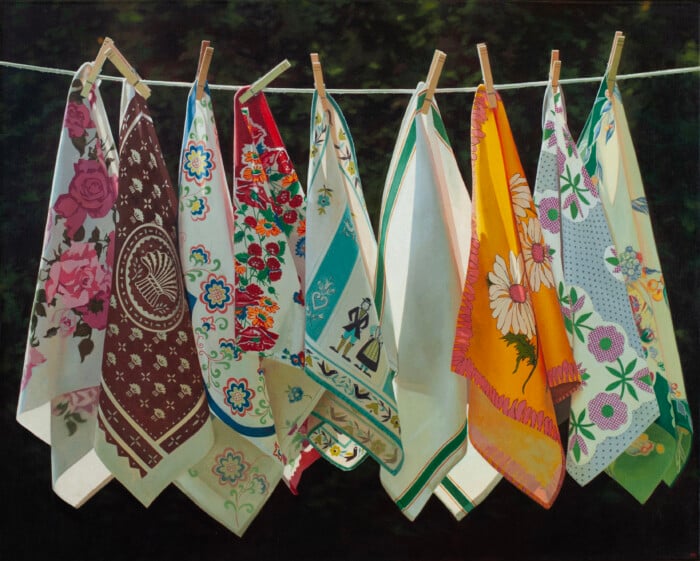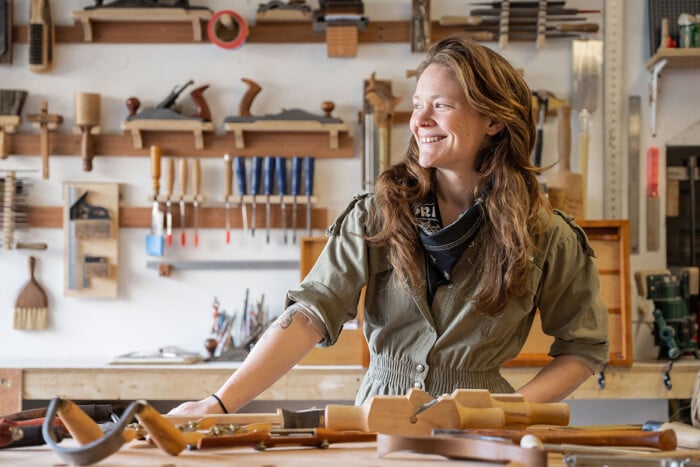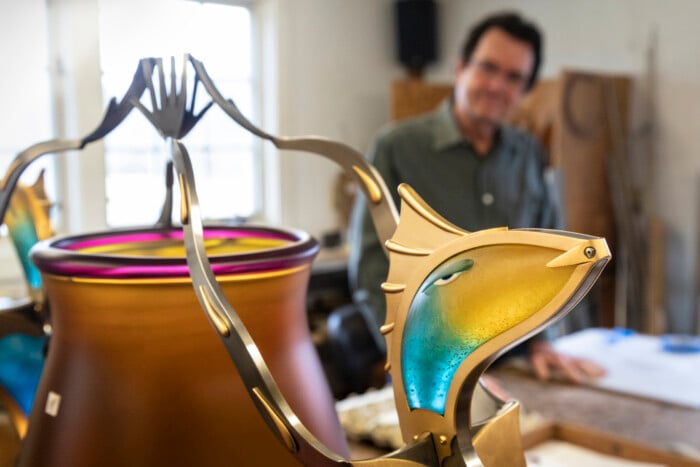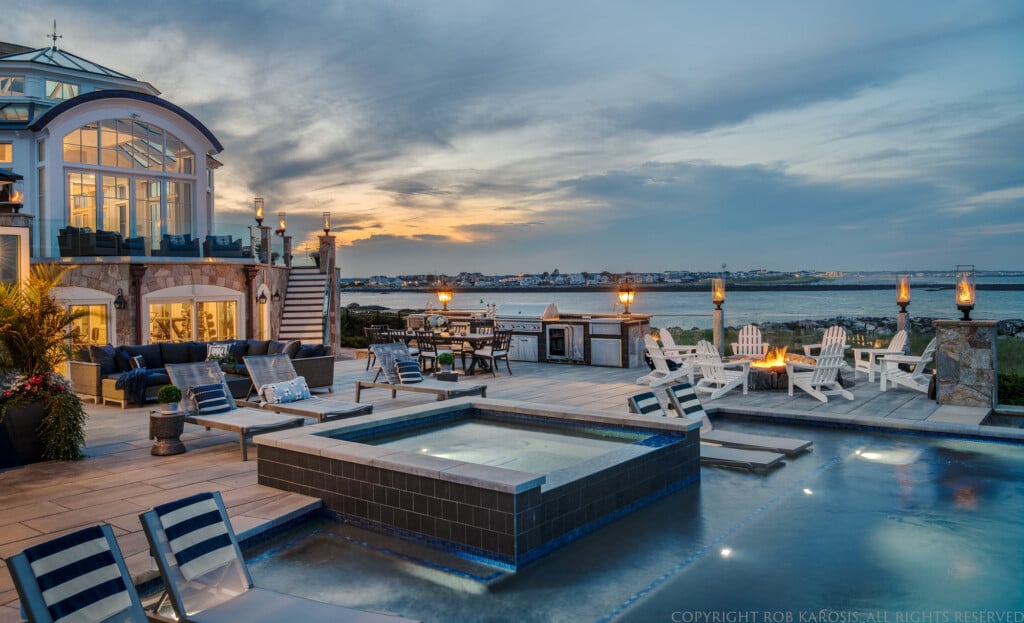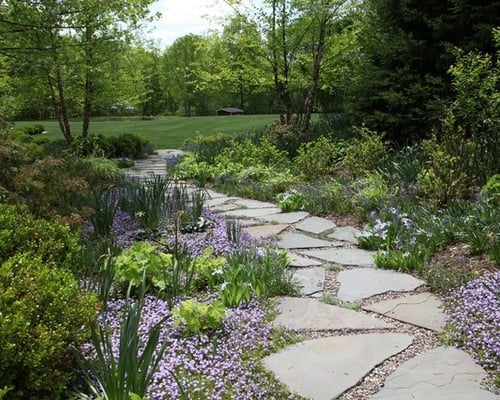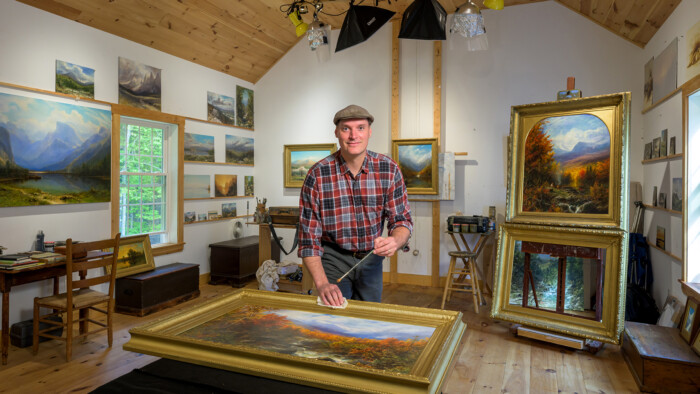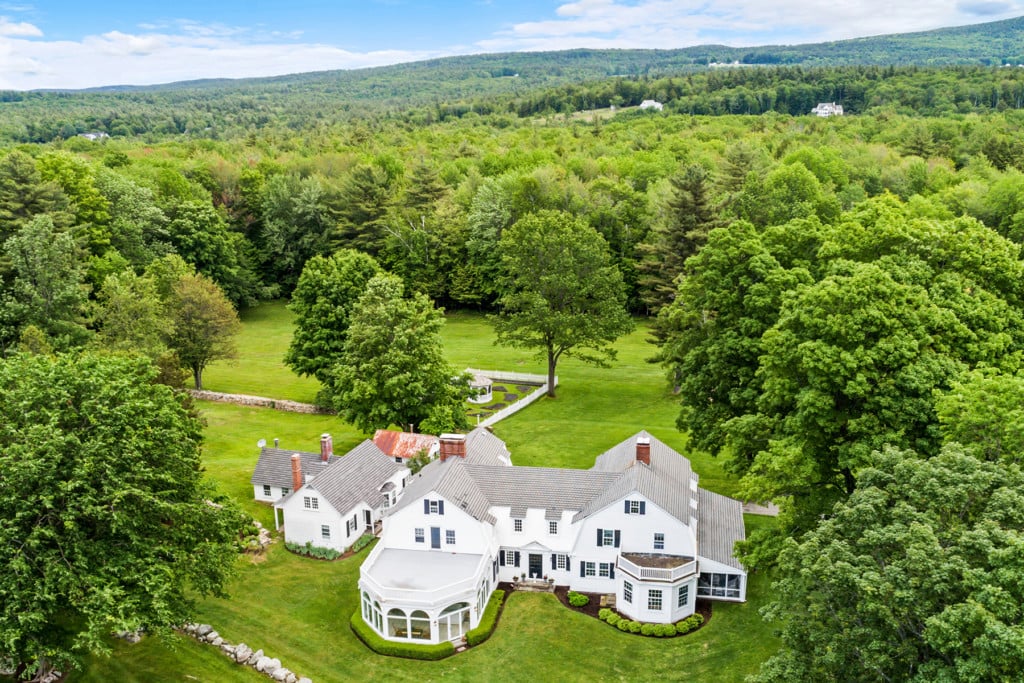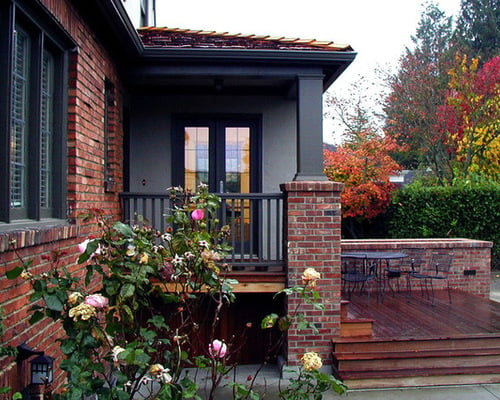The Beauty of Abstracts
Peter Anderson’s themes embrace landscapes seen from a variety of perspectives.

Peter Anderson favors abstract themes, which intrigue him with their ability to capture the essence of a subject through shape and color. “The beauty of abstracts is that no two people see the same thing,” he says.
New London artist Peter Anderson sees inspiration everywhere. His prints and paintings are born from old maps, agricultural equipment, screens, paint-stained paper towels and other “found” objects. He never knows where the blending of these unlikely items will take him, but he’s passionate about the journey.

As these two pieces illustrate, Anderson often draws inspiration from New Mexico, where he was born. Left: “Sedona,” oil on panel, 48 by 48 in. Right: “Clovis,” mixed media, 15.5 by 11.5 in.
Born in Roswell, New Mexico, Anderson comes from an artistic family. His mother was an avid amateur painter, his brother is a full-time artist, and an uncle was also an artist. His father was a businessman, and Anderson eventually followed this path but not before other explorations. After majoring in literature at the University of Denver, with a year spent studying in Stockholm, he taught English in Japan. Later, he worked in international finance, founded an import–export firm and an apparel company, and was a partner in a technology consulting business. Art slipped to the background, but was not forgotten.
At age 73, Anderson now has time to embrace his art, and his creativity is in full flow. His work is influenced by the many places he has lived, by the improvisational melodies of jazz and by painters such as Richard Diebenkorn, an American abstract painter who taught Anderson “to see differently.”
“The beauty of abstracts is that no two people see the same thing,” he explains. An example is his series called “Center Pivot,” which looks like pieces of agate and geodes but is actually agricultural irrigation equipment seen from the air — the lush green circles are the irrigated land, and the brown sections outside are the nonirrigated.
His prints based on topographical maps are striking. He started tracing the maps on plastic mylar film, outlining boundaries, rivers, lakes and mountains. “The patterns reduce a place to its simplest form,” he says. “The maps touched something in me, and I started adding my impressions through color and texture, letting my memories guide me.”

This print was made using the Penacook Quadrangle Map from the 1950 series of topographical maps of New Hampshire as reference.
Anderson has created New Hampshire map prints of Holderness, Penacook and Lovewell Mountain, as well as Lake Sunapee Country Club, a place he knows well. “When the sand traps and golf greens are reduced to their essence, you get amazing patterns. It’s familiar, but it also takes on a certain mystery.”
The artist loves pushing boundaries. “I take pictures of paintings and bring the image into my iPad where I continue painting with my painting program. I often photograph paintings that I did decades ago and view them with fresh eyes, adding things I didn’t see or feel before. I also keep all my old plexiglass printing plates. These still have bits of ink on them and ghosts of images, so they make fascinating backdrops for new paintings. I never know what I’m going to uncover when I blend old and new.”
Anderson has taken old paper towels stained with paint in random blobs and patterns and scanned them into his printer. He blends these images into a painting, letting the texture of the paper towel, and the paint splatters give unexpected dimension to his work.
“I work until something says, ‘It’s finished.’ My art is different things to different people, and that is my goal as an artist. As Thoreau said, ‘It’s not what you’re looking at, it’s what you see.’”
Anderson is represented by Candita Clayton Gallery in New London and has a couple of upcoming shows: a two-person show at AVA Gallery in Lebanon, May 10 to June 8, and a solo show in Portsmouth at the New Hampshire Art Association’s Levy Gallery from June 5 to July 1. See more work by the artist at peterandersonstudio.com.
